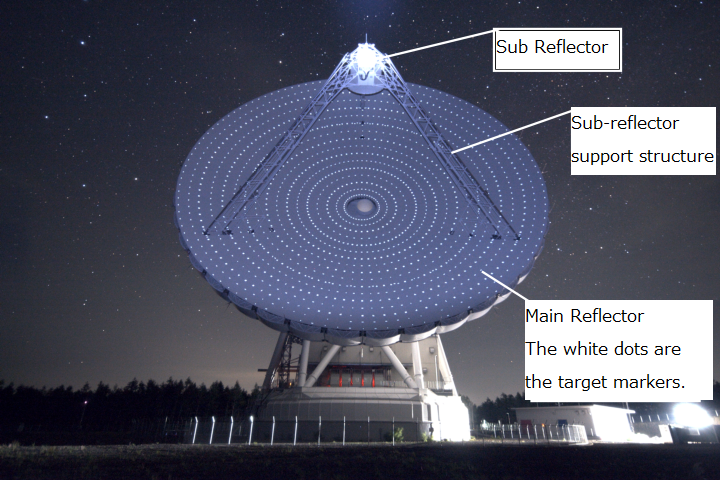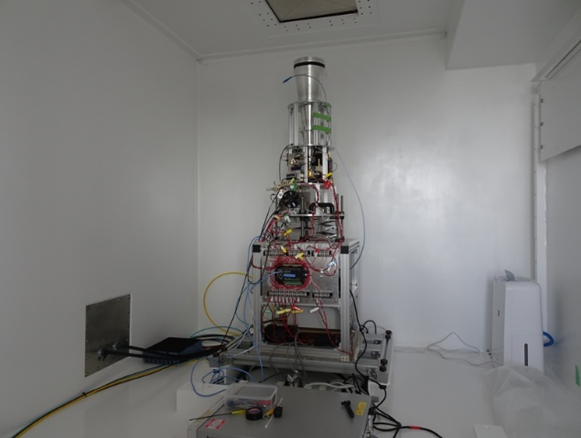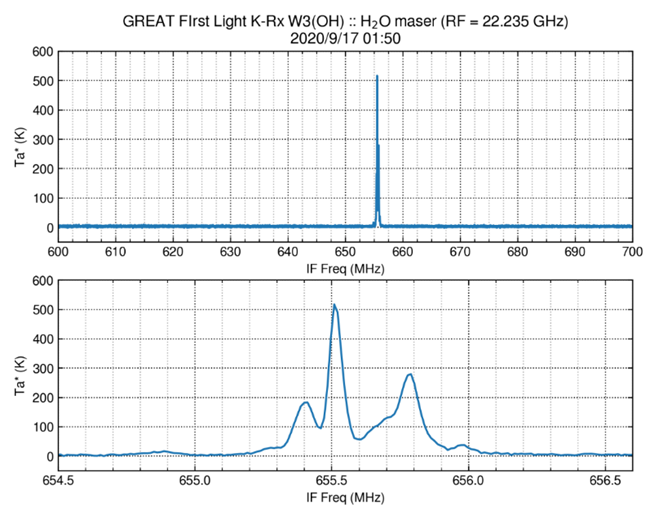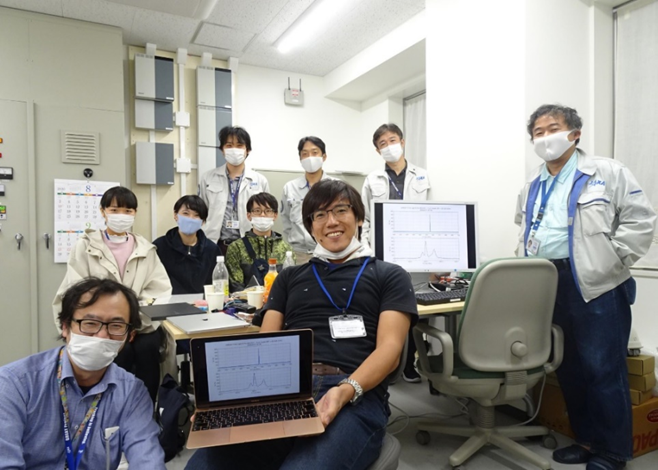Trivia
Measurement of antenna mirror surface accuracy
Aperture efficiency is one of the parameters that determine the performance of a parabolic antenna.
Aperture efficiency is expressed by the ratio of the opening area (theoretical actual area), that collects radio waves, and the effective area (effective area), that can actually collect radio waves.
The cause of this decrease in aperture efficiency is physical shielding by the secondary reflector and the stay that supports it, but the mirror surface accuracy (surface unevenness) of the primary reflector is the most important cause.
There are two methods for measuring this unevenness: photogrammetry (* 1) and radio holography (* 2).
The mirror surface accuracy of the 54m antenna in Misasa is measured by this photogrammetry method and radio holography method, and it has been confirmed that the accuracy is about 230 μm [rms], that is, the unevenness is within a range thinner than that of a credit card.
The photo below is taken at night of the target marker attached to the antenna when observing by the photogrammetry method.
The one that is evenly distributed on the antenna main reflector is the target marker, which cannot be confirmed during the day, but can be confirmed by shining light at night.

* 1 Photogrammetry method
A method of measuring the unevenness of the mirror surface of the antenna by analyzing the parallax information from the two-dimensional images obtained by taking pictures from multiple observation points of the reflector attached to the mirror surface.
A method of measuring the unevenness of the mirror surface of the antenna by analyzing the parallax information from the two-dimensional images obtained by taking pictures from multiple observation points of the reflector attached to the mirror surface.
* 2 Radio holography method
The radiation pattern of the radio telescope can be obtained by taking the correlation * between the signals received by the antenna that measures the beacon radio wave emitted from a geostationary satellite and the reference antenna. By Fourier transforming this, the electric field distribution at the aperture of the radio telescope is obtained. The amplitude of this electric field distribution is the irradiation distribution, and the phase is the mirror surface error (unevenness).
The radiation pattern of the radio telescope can be obtained by taking the correlation * between the signals received by the antenna that measures the beacon radio wave emitted from a geostationary satellite and the reference antenna. By Fourier transforming this, the electric field distribution at the aperture of the radio telescope is obtained. The amplitude of this electric field distribution is the irradiation distribution, and the phase is the mirror surface error (unevenness).
*: The intensity beam pattern of the radio telescope alone (intensity only) and the phase beam pattern from the radio telescope-reference antenna are combined to form a complex beam pattern. From there, Fourier transform is performed to return the electric field distribution (intensity, phase) on the mirror surface.
Possible division (the beginning of water maser W3 (OH) at the Misasa station)
In order to verify the performance of the antenna (Validation), we developed a 22GHz band water mather receiving system in collaboration with JAXA and Osaka Prefecture University, and made the first observation.
The pointing accuracy of the antenna causes an error due to the mechanical error of the antenna, the inclination of the ground, and the surrounding environment, but in order to eliminate this, the position is accurately obtained and the cataloged star is tracked. , This error component is analyzed and corrected to improve the pointing accuracy.
The Misasa station has a reception system in the 32GHz band, but since there are few stars that emit strong radio waves in the 32GHz band, we have a reception system that can receive radio waves radiated from water masers in the 22GHz band with Osaka Metropolitan University *. It was newly developed by the joint research of.
In the future, we plan to use this system to verify and improve the performance of antennas.
The photo below shows a 22GHz band room temperature receiver. Osaka Prefecture University is in charge of the horn that captures radio waves, the spectrometer, and these processing programs, and JAXA has developed peripheral devices such as receivers and networks.
* From April 1, 2022, Osaka City University and Osaka Prefecture University have been integrated into Osaka Metropolitan University.

↑22GHz band normal temperature receiver installed at Misasa station (the cone-like thing at the top is the horn)
It was unfortunately raining during the test observation period (September 16th to September 18th, 2020), but we succeeded in the first observation of the W3 (OH) water maser * in the massive star formation region and the Ultra Compact HII region. After that, we succeeded in observing other water masers one after another!

↑ Spectrum of water maser W3 (OH) observed with AC240 spectrometer

↑ JAXA staff and Osaka Prefecture University who participated in the development and observation.
Despite the observation in the middle of the night, the reception was successful, so the fatigue was blown away in an instant.